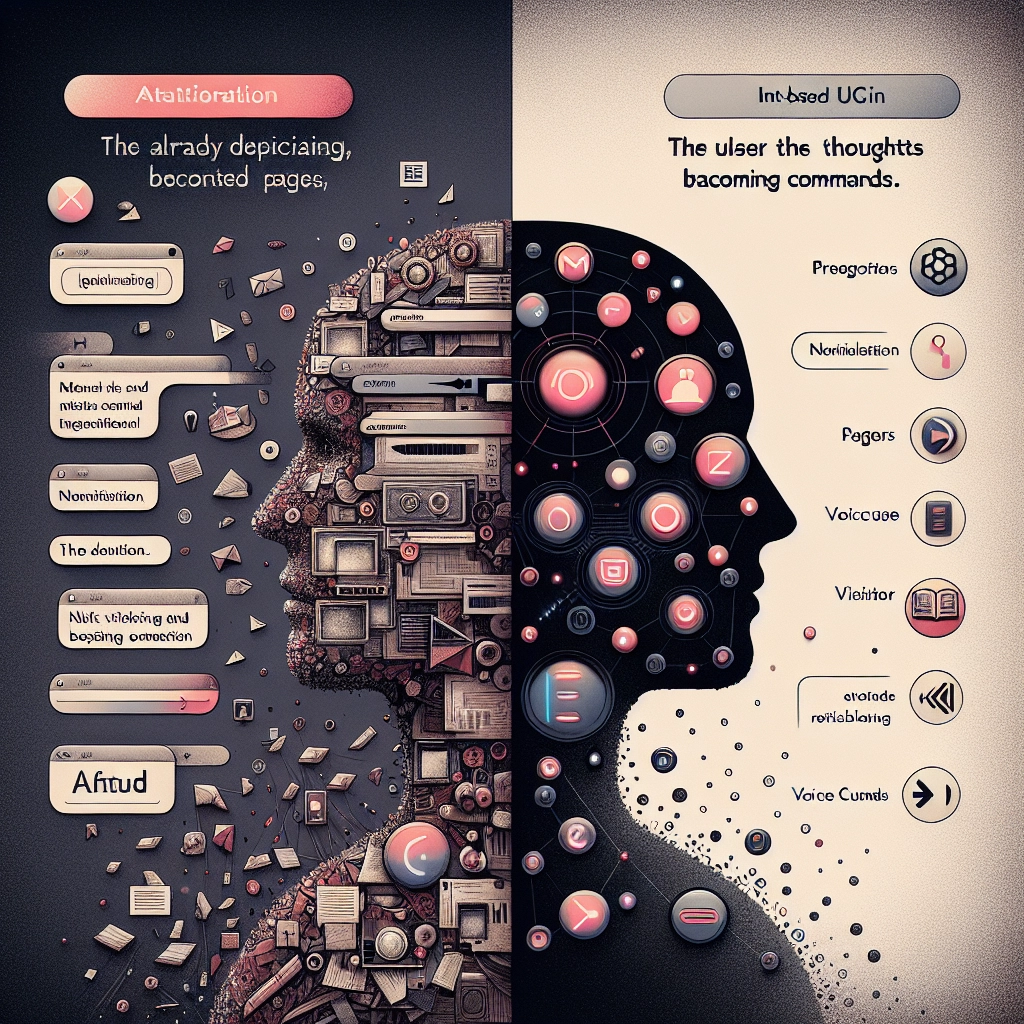Navigation is becoming obsolete, and it’s not a coincidence. As design trends move towards intent-based user interfaces (UIs), users now expect their interactions to be intuitive and anticipatory. Rather than clicking through menus, they desire the interface to "read their minds." But this raises a question: are we truly creating seamless experiences, or are we merely crafting invisible constraints?
For years, we perfected navigation methods—breadcrumbs, sidebars, sticky headers, and more. We meticulously designed the user journey as if it was a sacred expedition towards conversion. However, the landscape is changing; users increasingly prefer interfaces that understand their needs without explicit navigation.
The evolution towards intent-based UI implies that traditional navigation methods are fading away. Users, notably influenced by platforms like Google, TikTok, and AI assistants, have adjusted their mindset. They no longer think, "Where can I find this?" Instead, they express, "I want this; make it happen." Navigation has transitioned from a structured map to a responsive service.
This shift is evident in numerous applications. For example, Spotify curates playlists based on your mood without waiting for a search query, Google Maps remembers your location, and TikTok focuses on content consumption rather than navigation. Meanwhile, tools like ChatGPT and Siri prioritize user intent over traditional menus.
However, there’s a potential downside to this approach: what happens when the interface misinterprets user intent? If the UI hides options and assumes preferences incorrectly, users may find themselves stuck, similar to arguing with an overzealous butler who keeps serving the wrong drink. This fragility of intent-based systems highlights their reliance on accuracy; when they fail, they can lead to frustration.
Another significant concern is the loss of cognitive maps—mental representations users form to navigate systems. Traditional navigation provides a clear structure and sense of control, which is stripped away by intent-based designs that conceal the underlying logic. Users can feel disoriented and unclear about how to move forward.
Take Netflix as an example. It excels at suggesting content but can become a trap for users when its recommendations don’t align with their mood. Users may find themselves stuck in a feedback loop driven by the platform’s assumptions, losing the ability to independently explore.
Paradoxically, while designers aim to empower users through control and efficiency, intent-based designs might inadvertently limit agency and exploration. The quest for personalization often leads to frustration rather than satisfaction, suggesting a disconnect between intended improvements and users’ actual experiences.
Intent-based interfaces have merit, particularly for clear tasks, such as reordering groceries or checking schedules. In these scenarios, predictive suggestions can genuinely enhance user experience. Yet these interactions work best as an addition to a robust UI, rather than as a complete replacement.
Users are inherently unpredictable—they change their minds and seek new experiences. Effective design embraces this ambiguity, offering choices even when the designers may believe they understand the user’s needs best. Intent should complement the user experience, not dominate it. A well-designed interface might say, "Here’s a suggestion based on your past behavior, but here are other options too."
As we look to the future, we must recognize that while users appreciate seamless, intelligent interfaces, they also value transparency and freedom of choice. Imagine a system smart enough to make suggestions while still allowing users to navigate freely—a UI that shows it believes in the user’s ability to choose.
In conclusion, while the goal might be to eliminate friction in user experiences, we must ensure that we do not sacrifice freedom of exploration. If we narrow interactions to what algorithms determine we desire, we strip away the joy of discovery and the possibility of mistakes that contribute to learning. Designing for humans means considering their needs and allowing room for their choices—let’s aim for design that prioritizes empowerment over predictability.
Welcome to DediRock, your trusted partner in high-performance hosting solutions. At DediRock, we specialize in providing dedicated servers, VPS hosting, and cloud services tailored to meet the unique needs of businesses and individuals alike. Our mission is to deliver reliable, scalable, and secure hosting solutions that empower our clients to achieve their digital goals. With a commitment to exceptional customer support, cutting-edge technology, and robust infrastructure, DediRock stands out as a leader in the hosting industry. Join us and experience the difference that dedicated service and unwavering reliability can make for your online presence. Launch our website.

